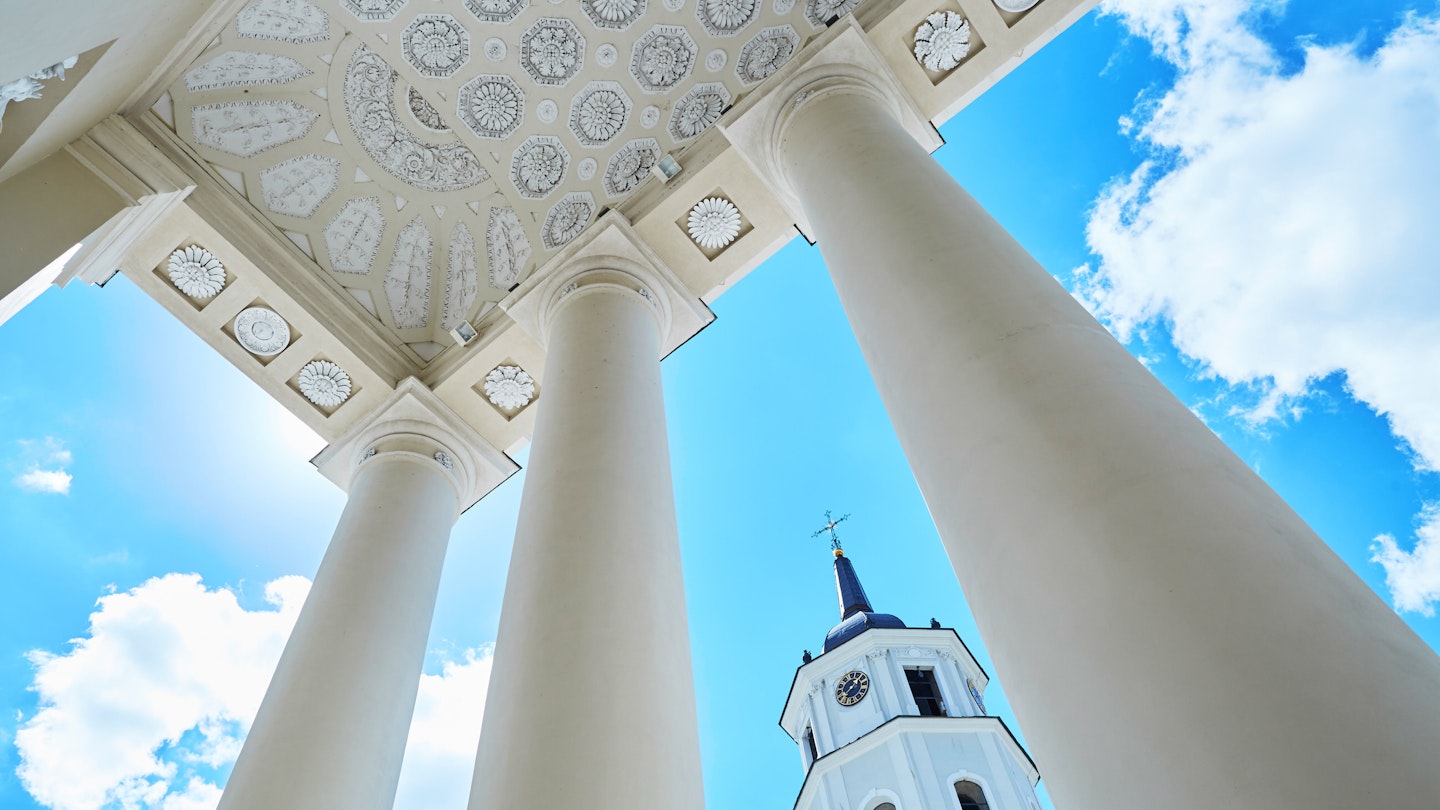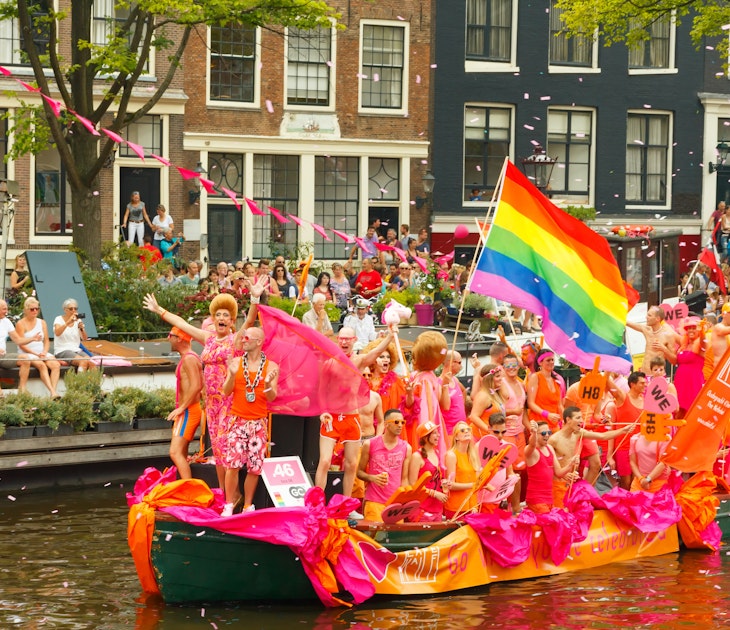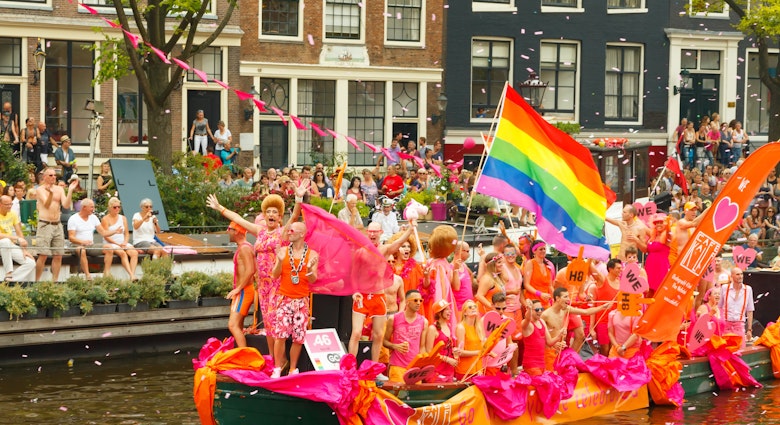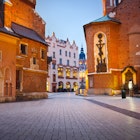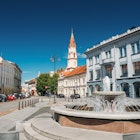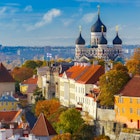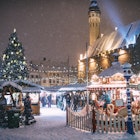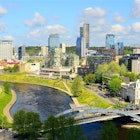Lithuania’s capital city has been quietly charming tourists for years, drawing in visitors with the largest baroque Old Town in eastern Europe, then wowing them with an offbeat elegance, a complex history and a cultural scene that's uniquely Lithuanian. Vilnius under-promises and over-delivers.
There's a host of reasons to visit this quirky, creative and compact city: here are 8 of the best things to do.

Take in that Old Town charm
Dating back to the 14th century, Vilnius has quite the historical pedigree. While the city's Unesco-listed Old Town is primarily known for its baroque buildings (of which the meticulously restored Palace of the Grand Dukes is one), a variety of styles are crammed onto its diminutive medieval footprint, from the Gothic St Anne's Church to the classical exterior of the gargantuan Vilnius Cathedral.
Aside from its architectural clout, the Old Town's jumbled cobbled streets are simply a delight to wander through; perfect for getting lost and 'finding' yourself in one of the many cafe-bars ferreted away in its alleyways or courtyards.
Uncover centuries of Jewish history
Once known as the Jerusalem of the North, the city's history has been inextricably interwoven with that of its Jewish community since the first Jewish merchants, traders and craftspeople were invited to Vilnius by the Grand Dukes just after it was founded.
Thriving, the Litvak (Lithuanian Jewish) population grew to 100,000 before WWII but, tragically, over 90% were murdered during the Holocaust, having been rounded up by the Nazis and imprisoned in two ghettos in the city. The Holocaust Musuem provides a harrowing account of these events, while the Tolerance Centre gives a broader overview of the Litvaks' history and their many contributions to Vilnius' culture and to Lithuania as a whole. Today, the Choral Synagogue on Pylimo gatve is the only remaining Jewish place of worship.
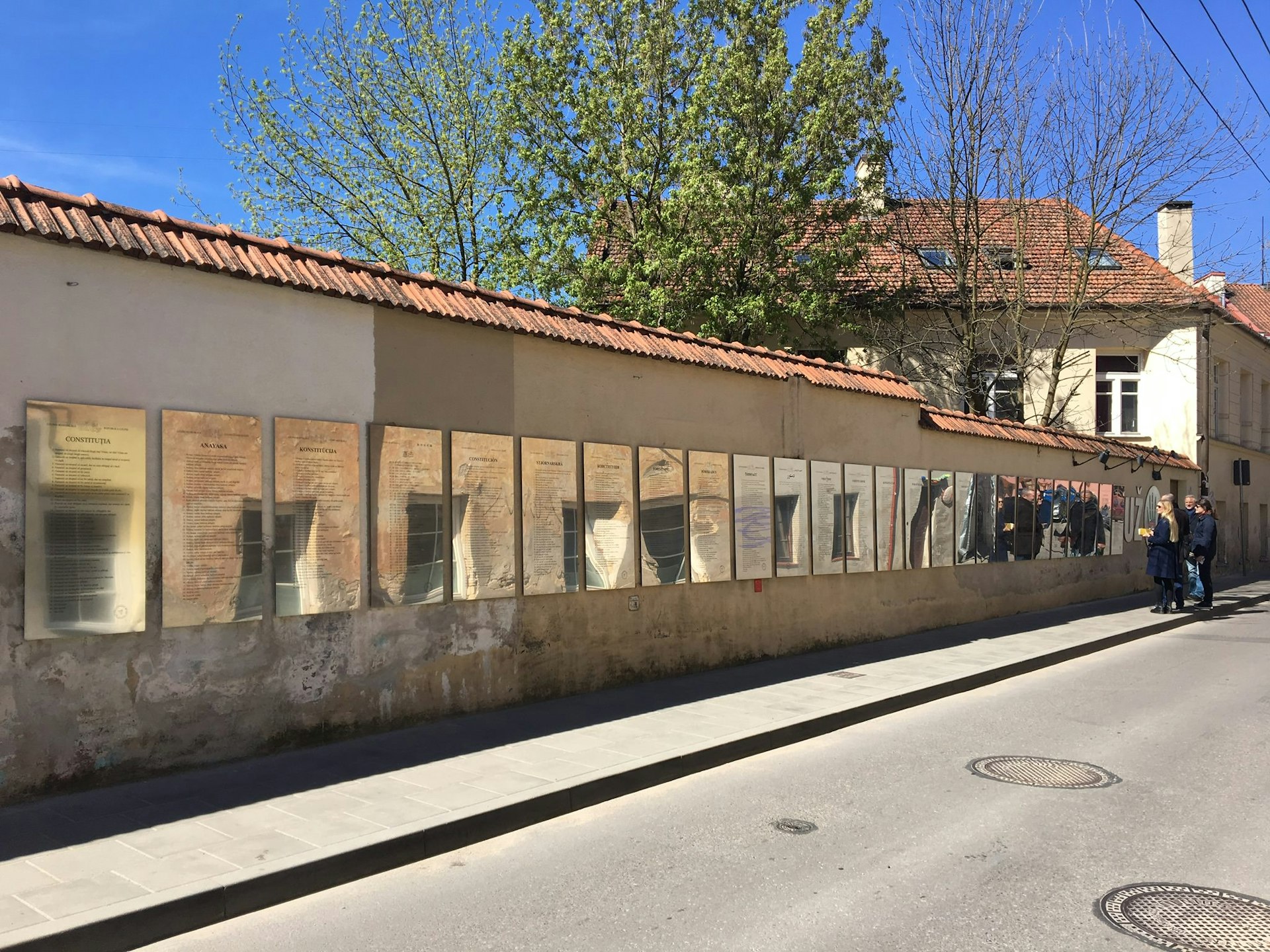
Visit a 'country' within a city
There can’t be many cities in the world where a collective of artists has banded together to declare their district an independent republic. But that’s exactly what happened in the creative neighbourhood of Užupis in 1997.
Were they serious or was it intended to be a work of performance art? That's still unclear but, whatever their motivation, they followed through on their resolve: cross over the Vilnia River and, as well as a multitude of galleries and artists' workshops, you'll find a 41-point constitution proudly on display in over 20 languages. You can even have your passport stamped at the Užupis Information Centre.
Reveal the city’s Soviet past
Lithuania’s history is complex, fascinating, and often harrowing. Following WWII, the country came under Soviet rule and, although resistance among Lithuanians was heartfelt, it was brutally stifled; the Museum of Genocide Victims gives a shocking insight into daily life during the Soviet period.
The country's independence was finally acknowledged by the USSR in 1991, but it came at a price, following the killing of 14 civilians when Soviet troops charged Vilnius' TV Tower. The 326m-high structure stands as a symbol of Lithuania's struggle for freedom, and there’s a monument to remember those who died.

Find a new point of view
The best way to see a city is often from above, and you won't find yourself short of options to get a bird's-eye-view in Vilnius. If you've the stamina for a reasonably steep ascent, the Hill of Three Crosses – a monument to a group of martyred monks – offers a spectacular panorama. Dog walkers and tourists mingle with canoodling teenagers on summer evenings to watch the sun set over the city.
Gediminas Hill, which is climbed via a steep cobbled path, or by hopping on the thigh-saving funicular, is another popular spot to admire the cityscape. Atop the hill is Gediminas Castle; the tower is all that remains of the 15th-century fortress, but the views are no less glorious for it. The site is currently under reconstruction but should be back in business for vista-viewing early in 2019.
Craft your shopping list
Traditional crafts are alive and well in Lithuania, and the capital is full of places to snaffle yourself a souvenir. Baltic amber jewellery or trinkets are the main sell, though fakes abound, so galleries such as the Amber Museum are your best bet to be sure you're getting the real deal. For a weightier purchase, head to Užupis Blacksmith Museum-Gallery for hand-wrought items including 'Lithuanian sun crosses', an amalgamation of the pagan symbol of the sun and a Christian cross.
Other pieces to look out for include linens embroidered or woven with geometric ethnic designs, black pottery (a technique to blacken the pots which dates to Neolithic times), and hand-carved, gargoyle-like wooden carnival masks.

Savour the flavours of Lithuania
Long gone are the days when Baltic cuisine was synonymous with 'stodge', but you’d be missing out if you went all that way and didn’t challenge yourself to finish the daddy of the dumplings, the torpedo-shaped cepelinai. Filled with ground meat, mushrooms or curd cheese, these potato dumplings are the very definition of comfort food, though you may need to schedule a nap afterwards. Cosy Senoji trobelė is an authentic place to give them a go.
Meanwhile Vilnius' culinary stars are working hard to change the face of Lithuanian food. At Ertlio Names, chefs expertly craft historically popular ingredients such as pheasant and pike into stunning modern dishes. Both Dziaugsmas and Sweetroot bring locavorism to the table, serving up exquisite plates from menus that can change from one day to the next to make the most of the seasonal produce available.

Brew up a night out
With a student population of over 20,000, you'd be right to expect things to get lively after dark. Beer (alus) experts are well-catered for: brew-pub Craft & Draft always has five of their own beers on tap as well as dozens of national and international choices, while Vejai's craft beer and cider menu will satisfy the thirstiest of punters and get their toes tapping with live music.
Liquor-lovers won't miss out, with cocktails expertly shaken or stirred at Alchemikas and Sweet and Sour, and the wine being more than fine at Notre Vie. And while the club scene might not have Berlin quaking in its boots just yet, a clutch of nocturnal haunts such as the two-floored Exit and techno-leaning Opium ensure that the city stays up until dawn...on the weekends at least.
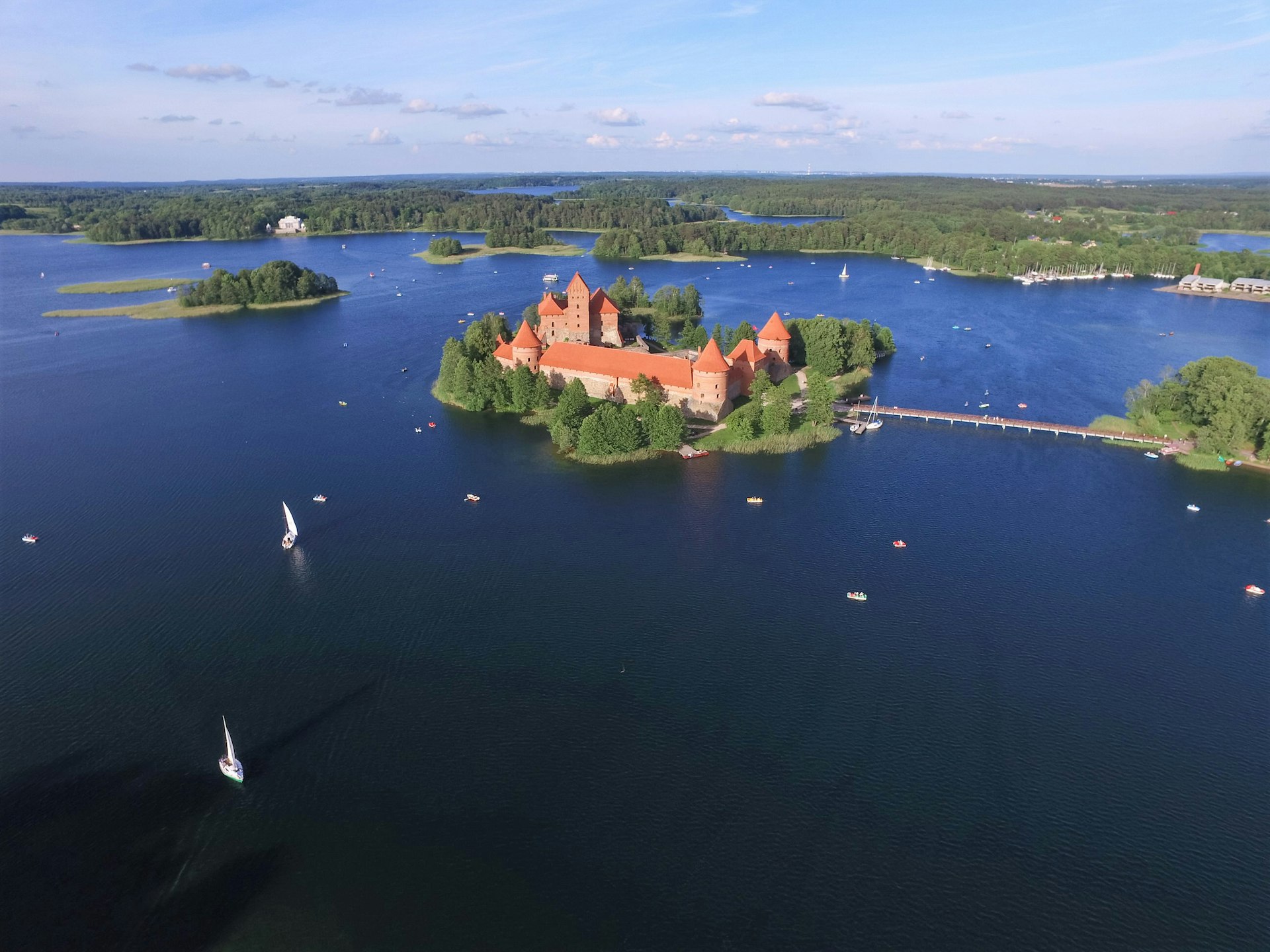
Day trip to Trakai
A little over half an hour on the train from Vilnius, the island castle at Trakai is an arresting sight, seemingly taken straight from the pages of a fairy tale, and well worth the trip on a visit to the Lithuanian capital. The 15th-century castle is most spectacular when seen from the water, so take a boat trip around it on Lake Galvė or, if you like your tours to be more active, take a kayaking trip with North North East. The surrounding forest is also part of the small national park, and makes for a peaceful scenic walk.
Trakai is also home to Lithuania’s Karaite minority. With fewer than 300 members in Lithuania, the community is striving to preserve their language, culture and cuisine. Filling up on Kibinai (the traditional Karaite pasty) at Senoji Kibininė is a satisfying starting point for anyone wanting to learn more, though the Karaite Ethnographic Museum admittedly provides more detail.
